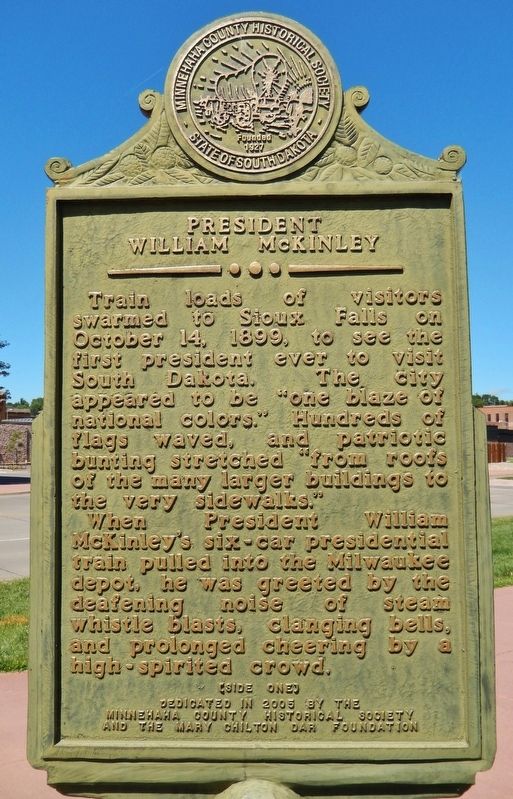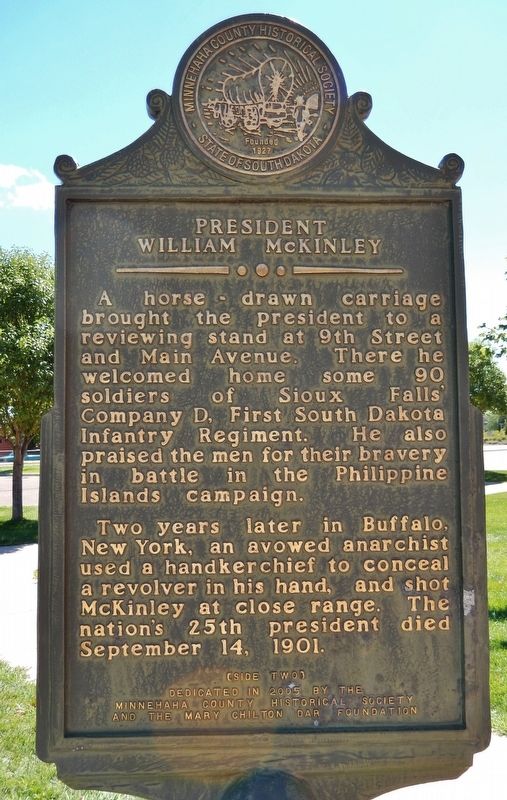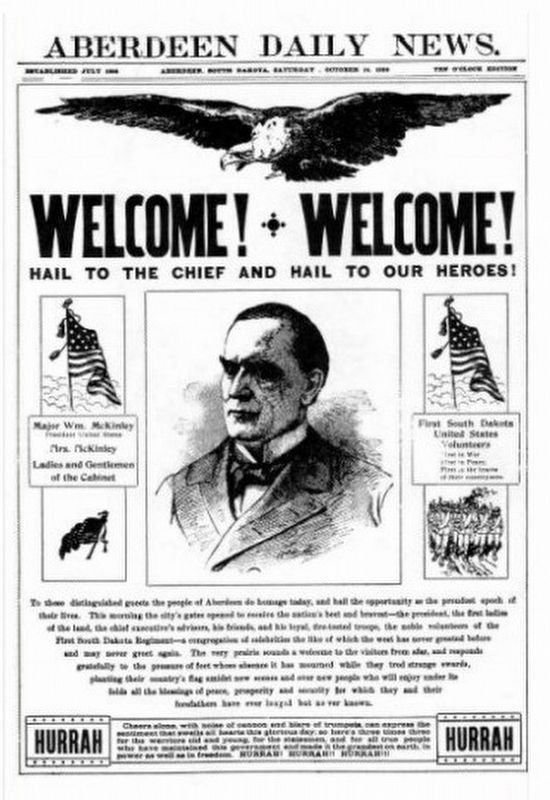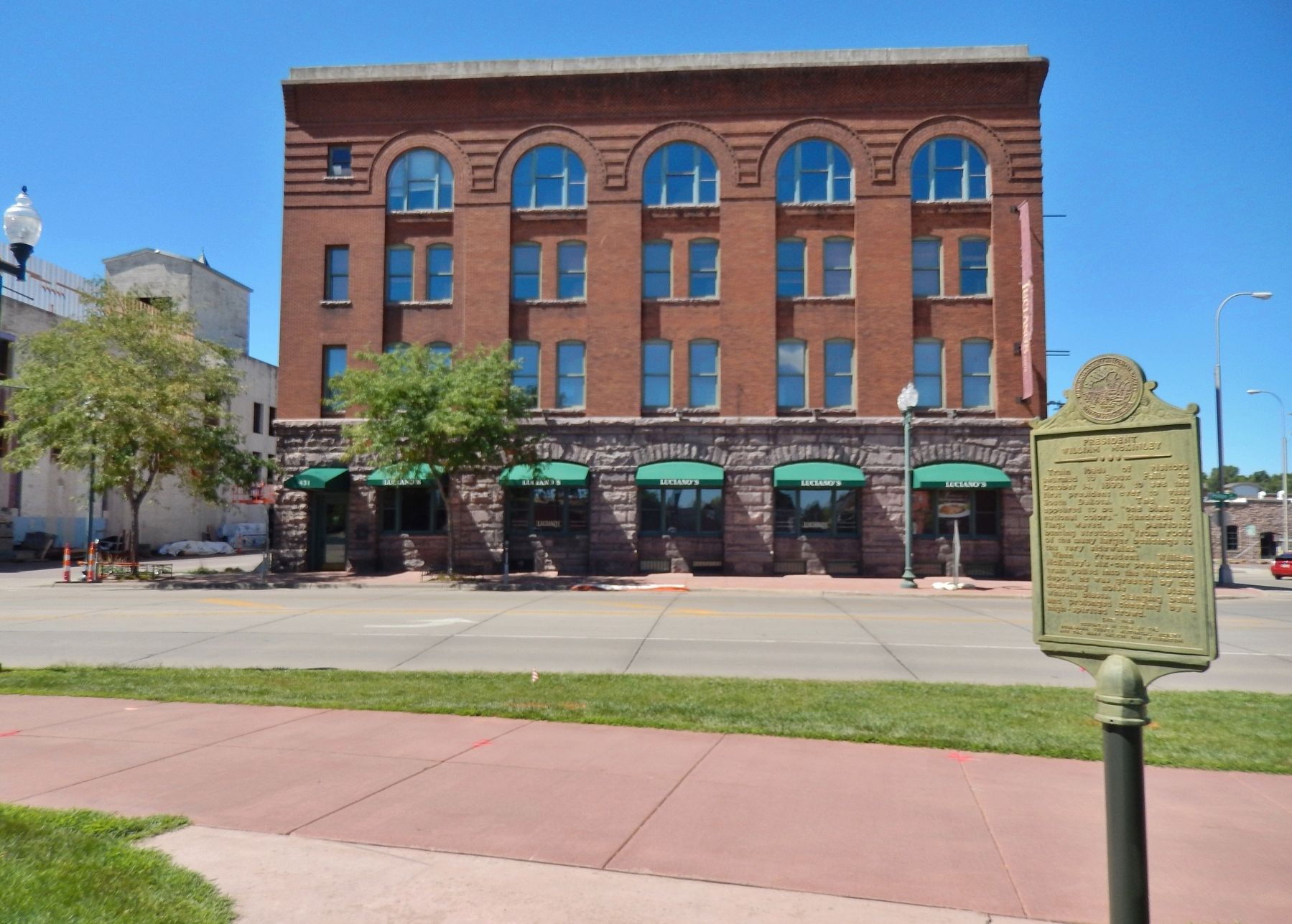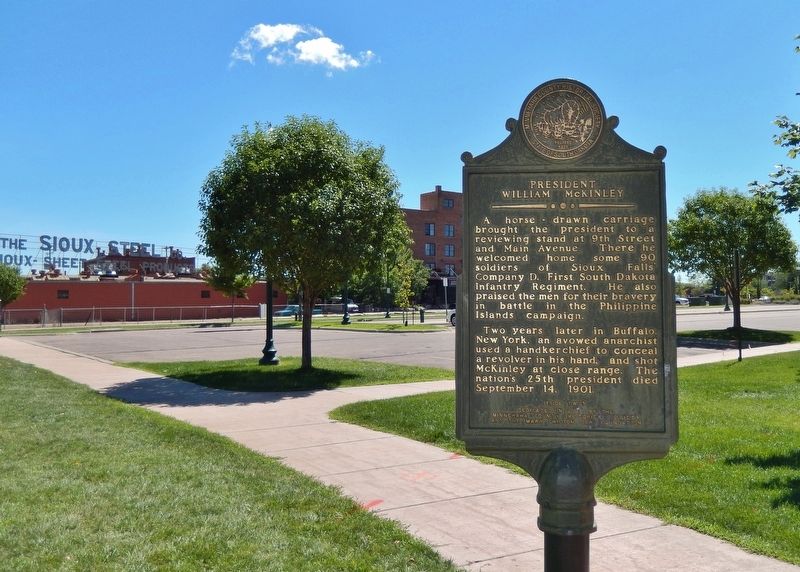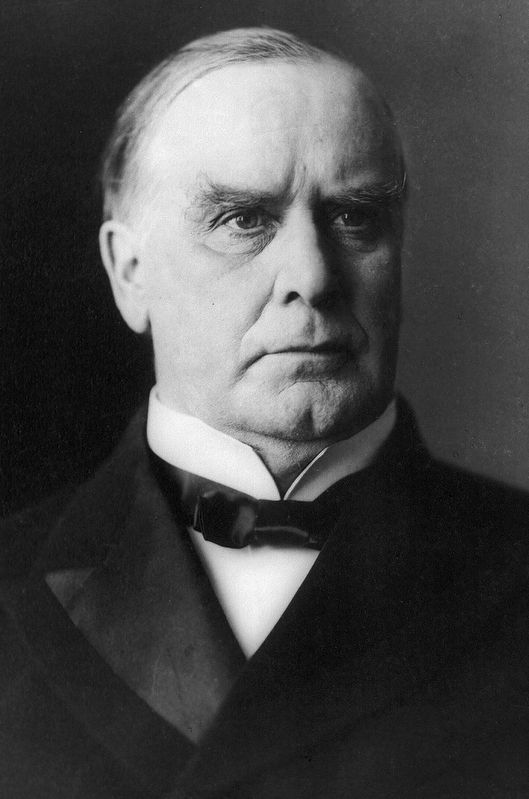Downtown in Sioux Falls in Minnehaha County, South Dakota — The American Midwest (Upper Plains)
President William McKinley
Train loads of visitors swarmed to Sioux Falls on October 14, 1899, to see the first president ever to visit South Dakota. The city appeared to be “one blaze of national colors.” Hundreds of flags waved, and patriotic bunting stretched “from roofs of the many larger buildings to the very sidewalks.”
When President William McKinley’s six-car presidential train pulled into the Milwaukee depot, he was greeted by the deafening noise of steam whistle blasts, clanging bells, and prolonged cheering by a high-spirited crowd.
A horse-drawn carriage brought the president to a reviewing stand at 9th Street and Main Avenue. There he welcomed home some 90 soldiers of Sioux Falls’ Company D, First South Dakota Infantry Regiment. He also praised the men for their bravery in battle in the Philippine Islands campaign.
Two years later in Buffalo, New York, an avowed anarchist used a handkerchief to conceal a revolver in his hand, and shot McKinley at close range. The nation’s 25th president died September 14, 1901.
and the Mary Chilton DAR Foundation
Erected 2005 by Minnehaha County Historical Society and the Mary Chilton Daughters of the American Revolution (DAR) Foundation .
Topics and series. This historical marker is listed in these topic lists: Government & Politics • Patriots & Patriotism • War, Spanish-American. In addition, it is included in the Daughters of the American Revolution, and the Former U.S. Presidents: #25 William McKinley series lists. A significant historical date for this entry is October 14, 1899.
Location. 43° 33.141′ N, 96° 43.597′ W. Marker is in Sioux Falls, South Dakota, in Minnehaha County. It is in Downtown. Marker is on North Phillips Avenue south of West 5th Street, on the right when traveling north. Marker is located beside the sidewalk on the east side of Phillips Avenue, near the north end of a large parking lot. Touch for map. Marker is in this post office area: Sioux Falls SD 57104, United States of America. Touch for directions.
Other nearby markers. At least 8 other markers are within walking distance of this marker. Richard Franklin Pettigrew (within shouting distance of this marker); Jewett Bros. & Jewett Warehouse (within shouting distance of this marker); Phillips to the Falls (within shouting distance of this marker); The Andrew Kuehn Company (about 400 feet away, measured in a direct line); John Deere (about 500 feet away); Dakota Iron Store (about 500 feet away); The Coliseum (about 500 feet away); The Hanging of an Innocent Man (about 500 feet away). Touch for a list and map of all markers in Sioux Falls.
Regarding President William McKinley. The President of the United States, William McKinley, arrived in Aberdeen, South Dakota to greet the soldiers of the 1st South Dakota Infantry on their return from the Philippines. An estimated 20,000 people gathered as McKinley gave a short speech and praised the South Dakota soldiers for their part in the Spanish American War and the Philippine Insurrection.
On April 24, 1898 the Spanish-American War began. The South Dakota volunteers mobilized on May 19, 1898 in Sioux Falls. From Sioux Falls the regiment moved to San Francisco, CA for validation. They then sailed to the Spanish Philippine Islands, arriving on August 25, 1898.
By the time the regiment arrived in the Philippines the Spanish-American War was over and the South Dakota Infantry was assigned to guard duty in Manila. On February 4, 1899 the Philippine Insurrection broke out. From that date until August 5 the 1st South Dakota fought with distinction against the insurrectionist forces. During the fighting the regiment suffered heavy casualties, including 27 soldiers killed in action and 93 more wounded.
The 1st South Dakota Infantry Regiment's 126 consecutive days under fire led General Arthur MacArthur, commander of the division in which the regiment served and father of Douglas MacArthur, to say "The record of the South Dakota regiment has no parallel in military history, so far as I know."
It was therefore fitting that President William McKinley was present in person in Aberdeen on October 14, 1899 to welcome the regiment home and convey to the men the appreciation of the nation for the service they had rendered during a time of need in their country's history.
South Dakota National Guard Museum
Credits. This page was last revised on May 3, 2023. It was originally submitted on October 3, 2018, by Cosmos Mariner of Cape Canaveral, Florida. This page has been viewed 279 times since then and 35 times this year. Photos: 1, 2. submitted on October 4, 2018, by Cosmos Mariner of Cape Canaveral, Florida. 3. submitted on February 6, 2021, by Larry Gertner of New York, New York. 4, 5. submitted on October 4, 2018, by Cosmos Mariner of Cape Canaveral, Florida. 6. submitted on October 29, 2018, by Allen C. Browne of Silver Spring, Maryland. • Bill Pfingsten was the editor who published this page.
